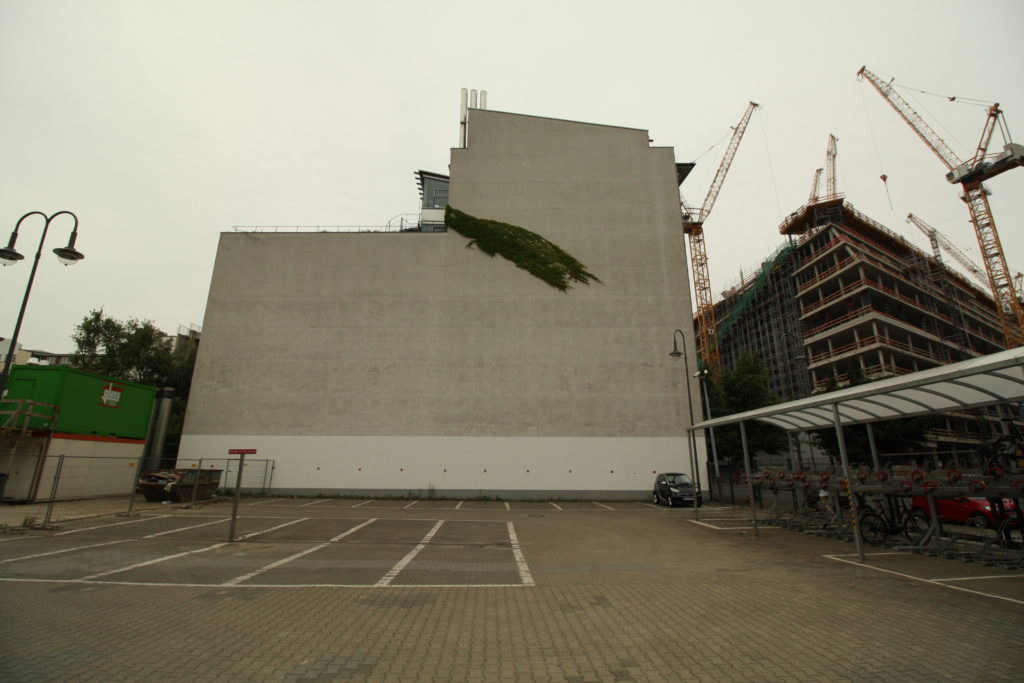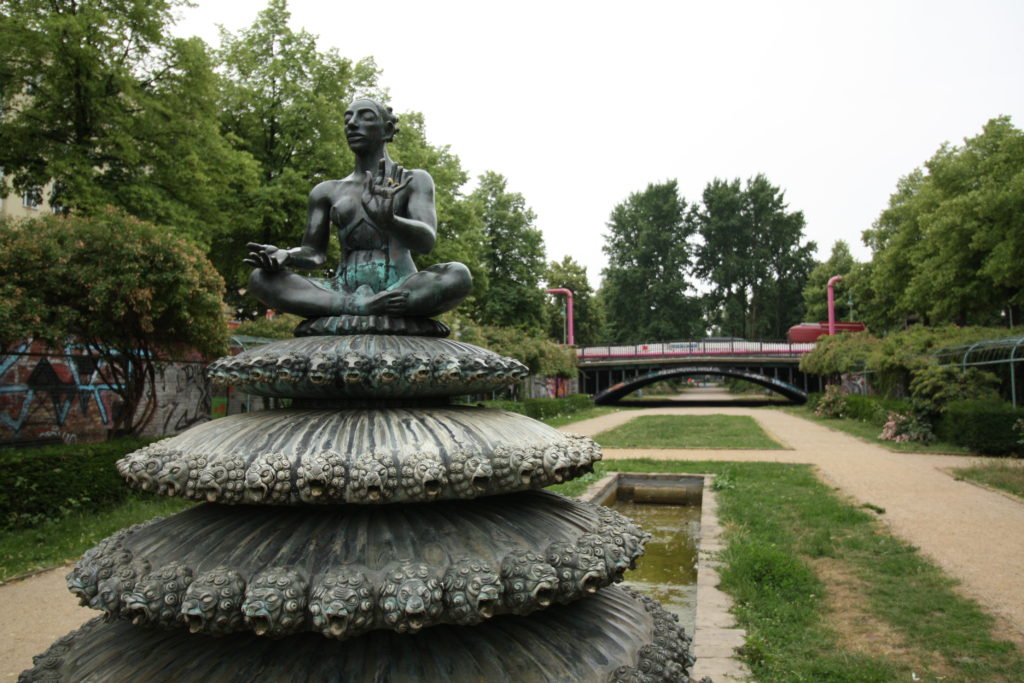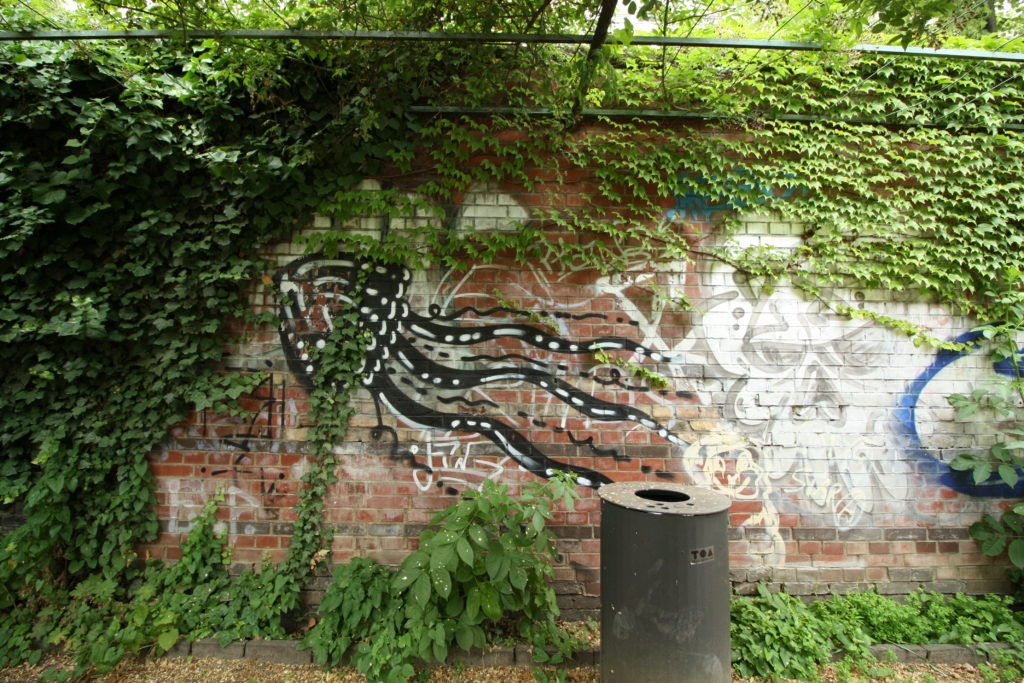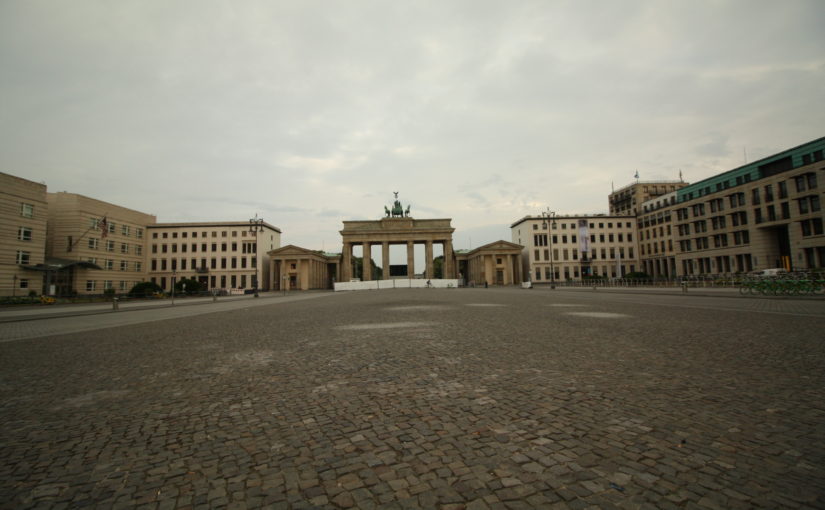Berlin seems grungy, quirky and cool, with an edge. Much different vibe than Munich or other big European cities I’ve been to.
I’m most impressed by how elegantly Berlin weaves in elements from its complex past throughout the city. Berlin tells its stories through big memorials and museums that you’ll see called out in every tourist book, and also subtle plaques and landmarks, sometimes posted on nondescript light posts, on nondescript streets. Interesting stuff that catches your eye as your walking by, and makes you stop and read and think for a moment. This is a difficult balancing act, and from what I’ve seen the city does a great job walking the tight rope.
Similar to Santiago, Chile. Both are big, modern, sprawling, capital cities in countries with strong economies. And both cities have divisive political trauma in their recent pasts. Perhaps that’s where some of that lingering edge comes from.
 Public transportation is easy, convenient, cheap and safe. I took trains, subways, trams or buses everywhere, usually without the aid of GPS. Never felt threatened, even late at night. Also, lots of people ride bikes all over the city. Note: they seem to be normal people on bikes, not just bike nerds. And there are protected bike lanes parallel to nearly every stretch of sidewalk.
Public transportation is easy, convenient, cheap and safe. I took trains, subways, trams or buses everywhere, usually without the aid of GPS. Never felt threatened, even late at night. Also, lots of people ride bikes all over the city. Note: they seem to be normal people on bikes, not just bike nerds. And there are protected bike lanes parallel to nearly every stretch of sidewalk.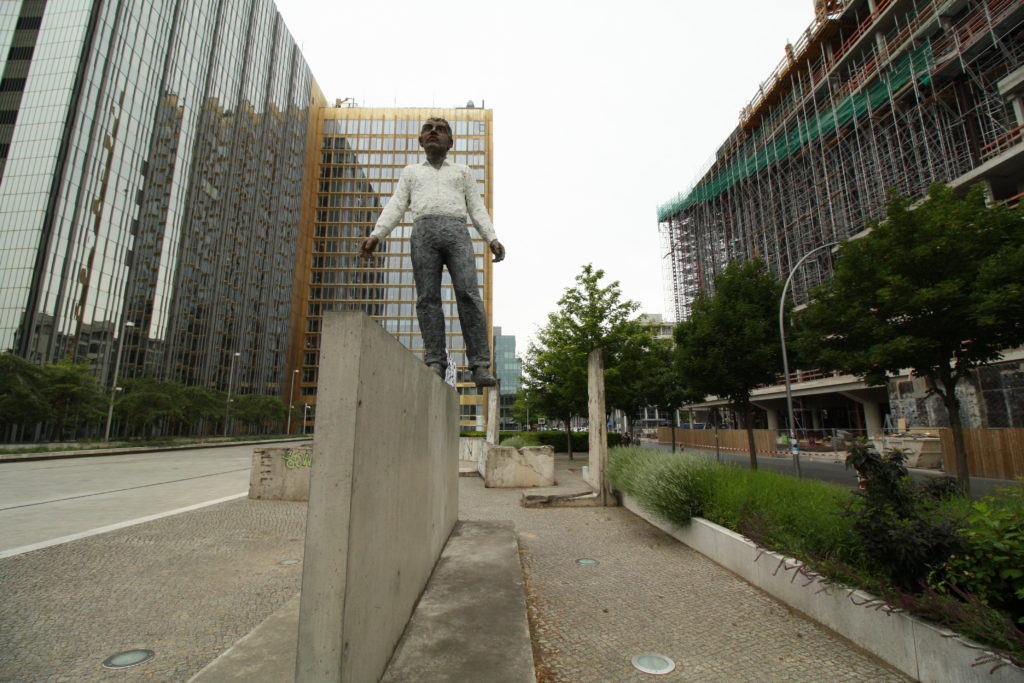 Not very walkable. I wouldn’t give Berlin a high score for walkability due to its sprawling parks, courtyards, overpasses and expansive starchitecture. Plus lots of construction. In some areas you get that Vegas strip effect where you can see where you want to go is just across the street, but the cars, bridges, stairways, pathways, buildings and barriers make it much further away than it seems.
Not very walkable. I wouldn’t give Berlin a high score for walkability due to its sprawling parks, courtyards, overpasses and expansive starchitecture. Plus lots of construction. In some areas you get that Vegas strip effect where you can see where you want to go is just across the street, but the cars, bridges, stairways, pathways, buildings and barriers make it much further away than it seems. Food in Berlin. Enjoy as many baked goods as you can. I had croissants with my coffee every morning. The burgers and beers are also good. And my one restaurant recommendation is Schneeweisse for Wiener Schnitzel (courtesy of Tyler Cowen’s post on Marginal Revolution). There’s also pretty good Thai and Vietnamese restaurants, but you need to ask them to make it spicy.
Food in Berlin. Enjoy as many baked goods as you can. I had croissants with my coffee every morning. The burgers and beers are also good. And my one restaurant recommendation is Schneeweisse for Wiener Schnitzel (courtesy of Tyler Cowen’s post on Marginal Revolution). There’s also pretty good Thai and Vietnamese restaurants, but you need to ask them to make it spicy.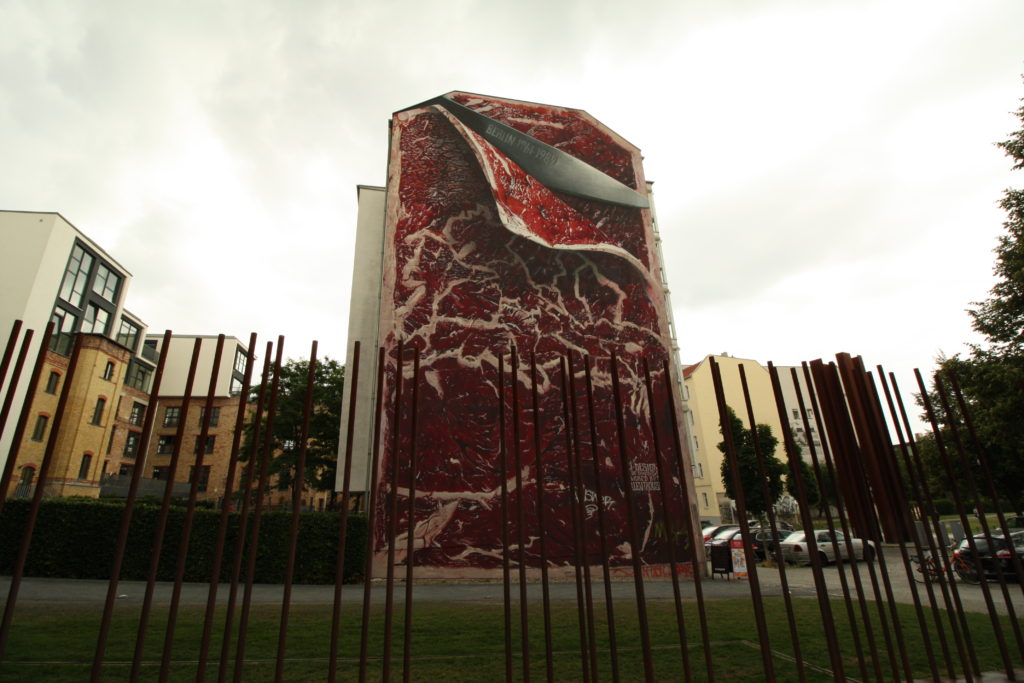 Find and do weird and interesting stuff: Walk the long path of the Berlin wall all the way to the East Side Gallery for a cool perspective of the city, with interesting parks, street art and subtle history peppered along the way. Radialsystem is a nearby performing arts space I stumbled into and out of. The Berlin Wall memorial is more mainstream, but a fascinating, must-see, especially the Documentation Center, and the Chapel of Reconciliation nearby (on the site where the former Church of Reconciliation stood, before it was dramatically torn down in 1985. “Mobile Churches” from Bucharest, part of the MakeCity Berlin festival that happened to be running while I was in town.
Find and do weird and interesting stuff: Walk the long path of the Berlin wall all the way to the East Side Gallery for a cool perspective of the city, with interesting parks, street art and subtle history peppered along the way. Radialsystem is a nearby performing arts space I stumbled into and out of. The Berlin Wall memorial is more mainstream, but a fascinating, must-see, especially the Documentation Center, and the Chapel of Reconciliation nearby (on the site where the former Church of Reconciliation stood, before it was dramatically torn down in 1985. “Mobile Churches” from Bucharest, part of the MakeCity Berlin festival that happened to be running while I was in town. Berlin reading: Going to the dogs (The story of a moralist) by Erich Kastner, who is most famous for his children’s stories. This book, however, is for grown-ups. Written in Berlin before the Nazi takeover, it was censored, butchered and burned. I read it on the train from Berlin to Munich and enjoyed it – twisted fiction. Some good lines:
Berlin reading: Going to the dogs (The story of a moralist) by Erich Kastner, who is most famous for his children’s stories. This book, however, is for grown-ups. Written in Berlin before the Nazi takeover, it was censored, butchered and burned. I read it on the train from Berlin to Munich and enjoyed it – twisted fiction. Some good lines:
He loved his wife deeply, especially when she was away.
and
My conviction is that there are only two alternatives for humanity in its present state. Either mankind is dissatisfied with its lot, and then we bash each other over the head in order to improve things, or, and this is a purely hypothetical situation, we are content with ourselves and the universe, and then we commit suicide out of sheer boredom. The result is the same.
and
You should assume, until the contrary is indisputably proved, that every person you meet, except children and the very old is a lunatic.
Best (and only) museum: Hamburger Bahnhof. I asked someone at a book store for a cool art museum that I might not already know about and this is where they sent me. It’s a massive museum that seemed to go on forever. Interesting mix of contemporary stuff, traditional stuff, revisionist stuff, and big-league stuff from people like Andy Warhol and Diego Rivera.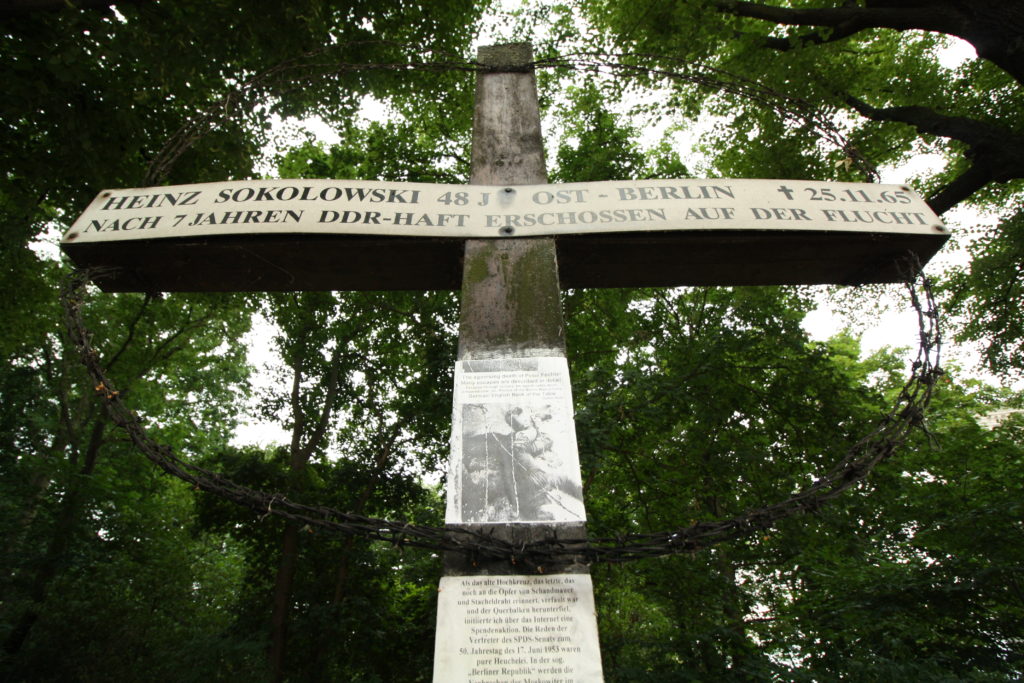 Best (and only) tour: Berliner Unterwelten (Subterranean Berlin). Organized by a nonprofit group dedicated to exploring and documenting the city’s underground architecture, these tours give a fascinating look at the city’s history, deep beneath the surface. I went on Tour M – Under the Berlin Wall and heard gripping stories of people who attempted to escape East Berlin by digging tunnels under the Berlin Wall. Some quick notes:
Best (and only) tour: Berliner Unterwelten (Subterranean Berlin). Organized by a nonprofit group dedicated to exploring and documenting the city’s underground architecture, these tours give a fascinating look at the city’s history, deep beneath the surface. I went on Tour M – Under the Berlin Wall and heard gripping stories of people who attempted to escape East Berlin by digging tunnels under the Berlin Wall. Some quick notes:
Three ways people attempted to escape under the wall: 1) digging tunnels, 2) subways, and 3) sewers.
All three methods required helpers in West Berlin to receive the escapees secretly, so spies wouldn’t discover them or the escape method.
The sewer method worked for two months, with 800 people escaping. Then the East found out about it, and obstructed the sewer system with rails, barricades and obstructions to prevent further escapes. This also obstructed the flow of the sewers, but GDR priority was to make the border impossible to get through.
The GDR closed off the subway stations in East Berlin, creating “ghost stations” as the trains from West Berlin sped past without stopping. They also added beds of nails (Stalin’s grass) and trip wires guarding the tracks and gates at the borders.
The amazing escapes by the three Bethke brothers: one escaped by paddling an air mattress across the river; one escaped by zip-lining over the wall; four years later, the first two flew an ultralight plane across to the East to rescue the third brother.
NBC documentary on Tunnel 29, which was started by university students in the West, suffered flooding, and in the end rescued 29 people. Up on the surface you can see the building they tunneled into, #7 Brunnerstrasse, sitting there like any other building on that street.
The insane story of the most successful underground endeavor, Tunnel 57, rescued 57 people over two nights. They were aiming to tunnel into the basement of a building but ended up in an outhouse nearby. Password “Tokyo.” Spies and informants. Dead of night. Shots fired. Conspiracies and cover-ups. Gripping stuff.
